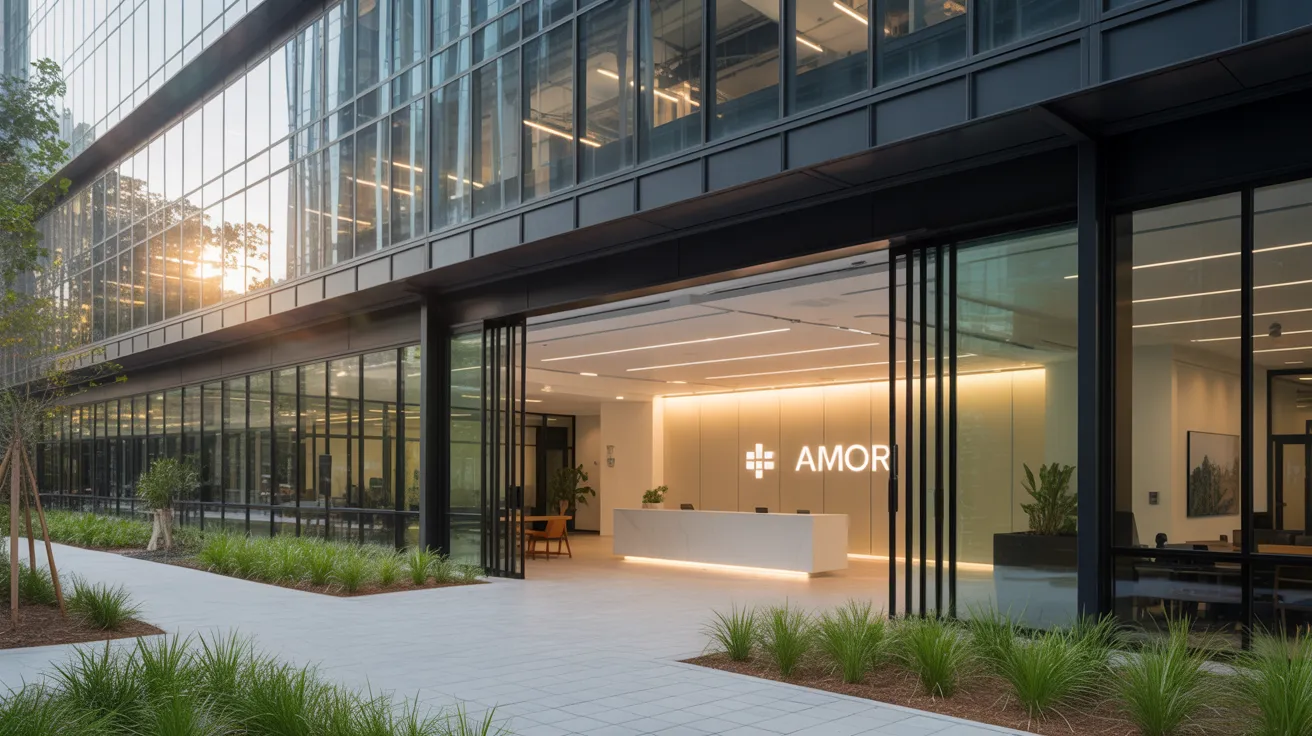You'll discover that premier architect projects in Decatur, Brookhaven, and Atlanta showcase modern innovative homes, sustainable mixed-use projects, and thoughtful historic preservation. Look for open-plan interiors with refined materials, adaptive reuse that honors industrial history, and eco-friendly elements such as native landscaping and solar installations. Acclaimed commercial and community buildings are notable for material innovation, daylighting, and integration with their communities. There's an impressive blend of technical expertise and design vision—delve deeper to see how every project raises the bar.

Key Takeaways
Innovative Living Spaces in Historic Decatur
How do modern-day architects redefine residential living in Decatur? You'll observe a noticeable movement toward open floorplans that enhance spatial flow and natural light. By eliminating traditional barriers, you design multifunctional living areas that encourage both connectivity and privacy. Architects utilize minimalist interiors, opting for refined materials like concrete finishes, glass, and natural wood. You'll discover built-in storage solutions and integrated lighting, which reduce visual clutter and amplify clean lines. Floor-to-ceiling windows and glass doors merge boundaries between inside and out, creating a seamless connection with designed outdoor spaces or patios. Every detail, from sleek storage units to hidden fixtures, maintains a streamlined aesthetic. By prioritizing open floorplans and minimalist interiors, you establish a new residential standard: one that balances efficiency, comfort, and sophisticated design.
Atlanta's Historic Preservation Projects
Many historic preservation projects in Atlanta showcase architects' commitment to rejuvenating the city's landmark structures while respecting their original character. You'll notice a precise approach when addressing preservation difficulties such as building deterioration, deteriorating elements, and code compliance. Architects utilize specialized restoration procedures—repointing brickwork, rebuilding period-appropriate windows, and strengthening historic facades—to guarantee both durability and genuineness. Every modification is diligently documented, from the choice of historically accurate materials to the incorporation of modern building systems that protect visual integrity. Architects must also balance energy efficiency with preservation mandates, often requiring resourceful problem-solving. These initiatives allow Atlanta's celebrated landmarks—churches, theaters, and antebellum homes—to benefit future generations, merging technical expertise with a sincere respect for architectural heritage and urban context.
Green Building Practices in Brookhaven
You'll find Brookhaven's top projects emphasize eco-friendly building materials that reduce environmental impact without compromising performance. Implement energy-saving design solutions to minimize operational costs and improve occupant comfort. Integrate advanced water conservation strategies, guaranteeing every system promotes long-term sustainability.
Green Building Materials
What sets sustainable architecture in Brookhaven unique is its devotion to innovative green building materials that minimize environmental impact without sacrificing structural integrity or aesthetics. You'll find architects here carefully select materials like recycled steel, celebrated for its strength and decreased embodied energy compared to conventional steel. Recycled steel's longevity guarantees lasting frameworks while supporting eco-conscious design. Moreover, implementing solar panels directly into building envelopes not only generates clean energy but also creates sleek, modern rooflines. You benefit from high-performance insulation and responsibly sourced wood, each selected for low toxicity and sustainable qualities. When you prioritize these cutting-edge materials, you help design spaces that present elegantly and deliver outstanding results, all while minimizing your carbon footprint and confirming your project meets the highest sustainability standards.
Eco-Friendly Design Strategies
Beyond material selection, energy-efficient design solutions are crucial for sustainable architecture in Brookhaven by maximizing efficiency throughout the process. It's essential to focus on solar integration, thoughtfully arranging photovoltaic panels to ensure maximum power generation without compromising the building's form. Align windows and living spaces to utilize natural daylight, reducing reliance on artificial lighting. Employ deep roof overhangs and fixed shading devices to reduce heat gain. With passive cooling strategies, like strategic ventilation, thermal mass integration, and operable high windows, you can ensure interior comfort while reducing mechanical cooling demands. Include high-performance insulation and airtight building envelopes to prevent thermal bridging and energy loss. Every detail, from the placement of glass elements to the implementation of advanced HVAC zoning, contributes to a holistic, energy-efficient outcome optimized for Brookhaven's climate.
Water Management Approaches
While Brookhaven's precipitation levels change seasonally, integrated water conservation methods continue to be vital for eco-friendly architecture. You'll want to emphasize rainwater harvesting systems, which capture runoff from building tops and preserve it for landscape maintenance or other non-drinking purposes. Implement bioswales, cisterns, and permeable surfaces to manage and clean stormwater, reducing both runoff and demand on municipal supplies. Drought-resistant landscaping further minimizes water usage—replace traditional turf with climate-adapted local vegetation, protective mulching, and targeted watering solutions. Select hardscape materials that facilitate infiltration rather than runoff. Evaluate low-flow appliances and efficient plumbing fixtures throughout the project. By incorporating these components, you'll create buildings that preserve Brookhaven's natural hydrology while achieving long-term sustainability through decreased water demand and responsible site management.
Outstanding Commercial Spaces
While the commercial sector requires both utility and visual aesthetics, award-winning spaces differentiate themselves through creative use of resources, space design, and sustainable practices. When you enter such a structure, you immediately observe how landscape design complement the architecture, directing movement and creating fluid indoor-outdoor transition. Every feature, from indigenous vegetation to permeable pavers, is picked to improve not just visual appeal but also environmental performance. Inside, outstanding interior design leverages ambient lighting, versatile configurations, and sound management to boost productivity and wellbeing. You'll find that material choices focus on durability and eco-consciousness, while color schemes and textures support brand presence. This careful attention to detail creates commercial environments that are both aesthetically pleasing and functionally effective, setting new industry standards.
Innovative Building Repurposing Projects
When architects tackle adaptive reuse, they convert obsolete structures into purposeful, high-performance environments that honor a building's original character. You'll observe this methodology in projects that repurpose old commercial buildings, manufacturing facilities, or historic venues into more info lively offices, galleries, or residences. Adaptive reuse demands a careful assessment of existing building systems, structural soundness, and support systems. You'll need to address code compliance and implement modern mechanical, electrical, and plumbing systems without damaging the historic fabric. Precise execution is vital—imagine exposed brick combined with sleek glazing or reclaimed timber beams supporting open-plan workspaces. Through thoughtful space transformation, you maximize usable area, boost energy performance, and deliver contemporary functionality within a heritage context. The result? Projects that effectively combine sustainability with forward-thinking approaches, elevating community value and architectural significance.
Innovative Integrated Urban Spaces
As urban areas become denser and urban land becomes increasingly scarce, mixed-use developments offer architects with opportunities to design complex, multi-programmatic environments that benefit from synergy. Architects must balance shopping, living, working, and entertainment functions within a single footprint, establishing seamless circulation and spatial hierarchy. Strategic metropolitan design calls for thorough evaluation of the site context, combining efficient transportation linkages, pedestrian pathways, and public spaces. Zoning regulations determine essential parameters—height limits, setbacks, parking requirements—that need inventive design solutions to enhance density without sacrificing livability. It's necessary to integrate sustainable materials, daylighting strategies, and energy-efficient systems to enhance performance and user experience. By emphasizing connectivity and accessibility, you can create vibrant, resilient communities that respond to evolving urban needs and advance architectural excellence.
Significant Public and Cultural Architecture
Outside the intricacies of mixed-use developments, you'll find public and cultural buildings requiring a deeper sensitivity to local identity, symbolism, and social context. When handling these projects, evaluate the connection between site, form, and function. You must acknowledge the significance of cultural landmarks; they must harmonize naturally into their urban fabric while preserving iconic presence. Building materials, natural light, and space planning are essential, ensuring visitor flow and accessibility are maximized. Public art installations need to be thoughtfully curated, serving as both anchors and stimulants for community engagement. You'll need to balance contemporary design with sensitivity to historical narratives, creating environments that encourage reflection and interaction. In Brookhaven, Atlanta, and Decatur, such buildings ultimately enhance civic pride and bolster a city's distinctive identity.
Popular Questions
How Do I Choose the Right Architect for My Project?
In choosing the right architect for your venture, you'll want to assess their experience with your preferred architectural style and examine their design portfolio for technical precision. Focus on architects who prioritize client collaboration—inquire about their approach for incorporating your input in design decisions. Examine their attention to detail in previous projects, and ensure they provide clear communication about timelines, budgets, and construction phases. This strategy helps guarantee a well-coordinated, successful project result.
What's the Typical Schedule of an Architecture Project?
As you start an architectural project, you'll progress through various project phases, each with a unique duration. Generally, the design processes—consisting of conceptual design, schematic design, and design development—span three to six months, depending on complexity. Creating construction documents takes another two to four months. Permitting timeframes vary, usually requiring one to three months. The building process can continue six months to twelve months or longer. Communicate regularly with your architect to ensure each phase meets your project's requirements and timeline.
What's the Cost of Architectural Services in Atlanta?
When you're ready to get started with your project, keep in mind that hiring an architect in Atlanta typically runs 8-15% of your total construction or renovation expenses. The fee varies according to architectural approaches, project scope, and the degree of customization you require. For a renovation, budget anywhere from $5,000 for basic services to over $50,000 for custom designs. Always establish requirements and outcomes upfront to prevent surprises.
What Required Permits Must Be Obtained Before Construction
Before initiating construction, you'll need to acquire various permits. Typically, you need to get a building permit, which confirms your plans comply with local building codes and zoning regulations. According to your project's scope, you might also need permits for electrical, mechanical, and plumbing work. Be sure to provide detailed architectural drawings for approval. Checking your design aligns with zoning requirements, such as setbacks and height restrictions, prevents costly revisions or delays in your construction timeline.
Are Architects Able to Handle Interior Design Also?
Architects absolutely can contribute to interior design. You'll get value from their precise technical approach and design-focused mindset, making sure interior aesthetics align seamlessly with the architectural design. When you work with an architect, you develop design synergy between building elements and interior spaces. They'll determine lighting, materials, and finishes, aligning every detail for a unified appearance. By including interior design in the initial stages, you perfect both function and beauty throughout your space.
Conclusion
As you explore Atlanta's distinctive communities, you'll observe how top architects combine form and function—over 60% of Atlanta's new developments incorporate sustainable design elements. You can see extraordinary precision in all adaptive reuse or mixed-use development. Whether it's maintaining traditional character or creating modern marvels, these projects push boundaries and establish benchmarks. When you walk these streets, you're experiencing a city defined by innovation, technical expertise, and bold architectural vision.
 Tatyana Ali Then & Now!
Tatyana Ali Then & Now! Shane West Then & Now!
Shane West Then & Now! Rachael Leigh Cook Then & Now!
Rachael Leigh Cook Then & Now! Batista Then & Now!
Batista Then & Now! Justine Bateman Then & Now!
Justine Bateman Then & Now!